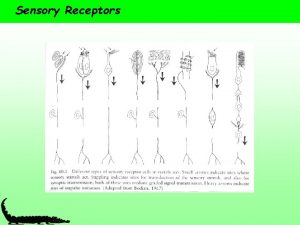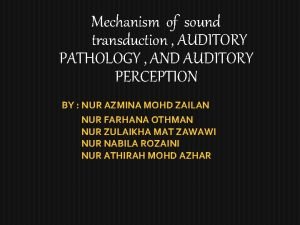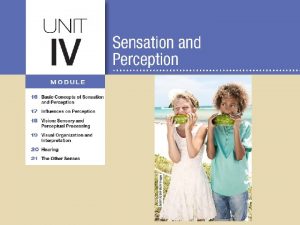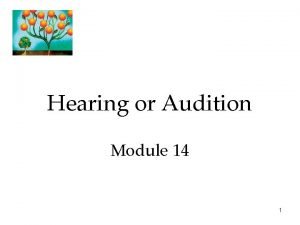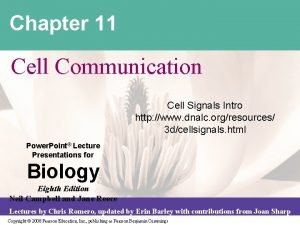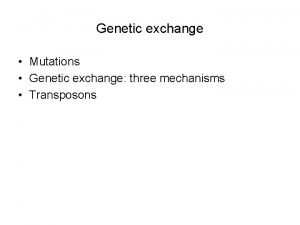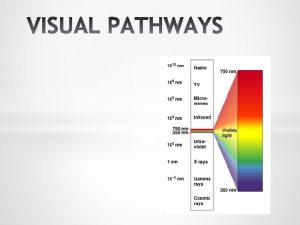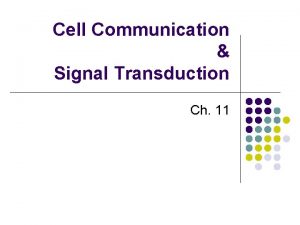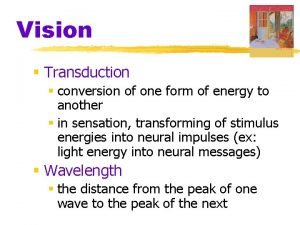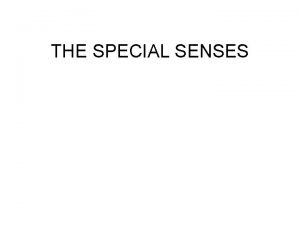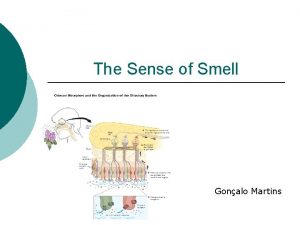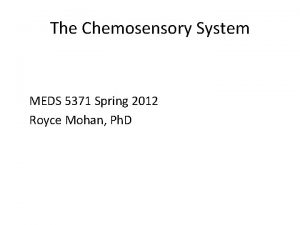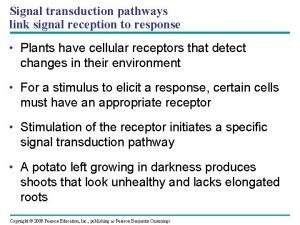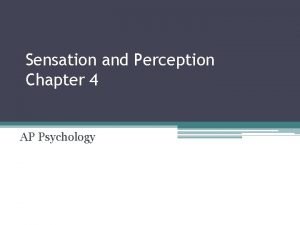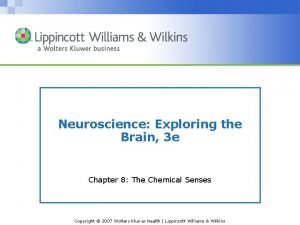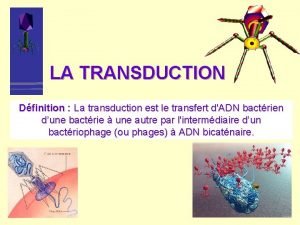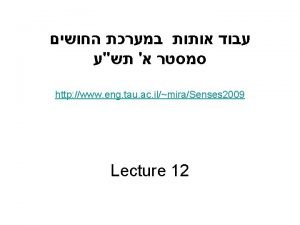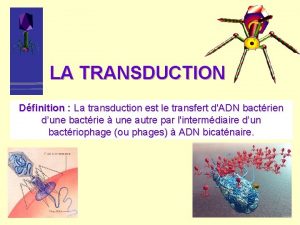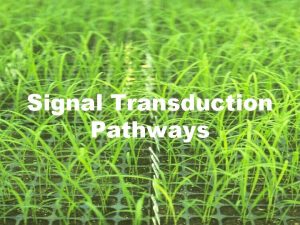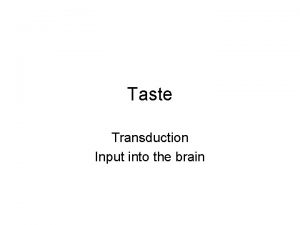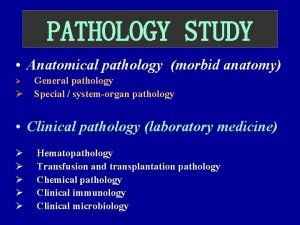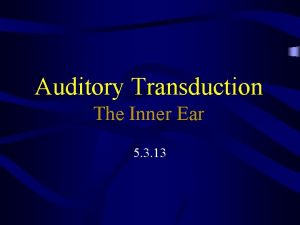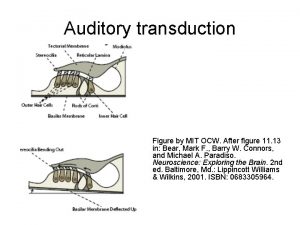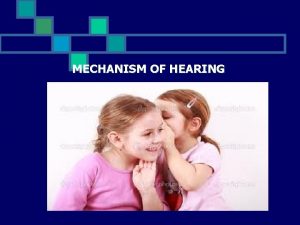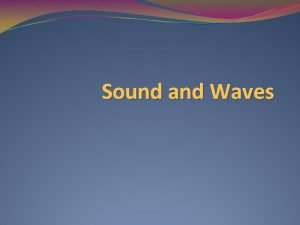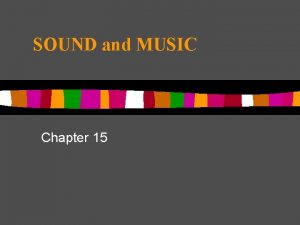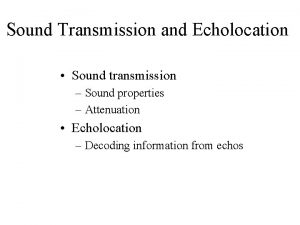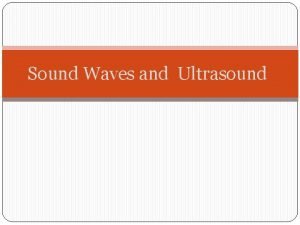Mechanism of sound transduction AUDITORY PATHOLOGY AND AUDITORY
























- Slides: 24

Mechanism of sound transduction , AUDITORY PATHOLOGY , AND AUDITORY PERCEPTION BY : NUR AZMINA MOHD ZAILAN NUR FARHANA OTHMAN NUR ZULAIKHA MAT ZAWAWI NUR NABILA ROZAINI NUR ATHIRAH MOHD AZHAR

Mechanism of sound transduction BY : NUR AZMINA MOHD ZAILAN NUR FARHANA OTHMAN



HOW THE EAR HEARS ? SOUND AURICLE PERILYMPH VESTIBULAR WINDOW (OVAL WINDOW) AUDITORY OSSICLES (M, I, S ) SCALA VESTIBULI COCHLEA (ORGAN OF CORTI ) BRAIN TYMPANIC MEMBRANE

COCHLEA �Long coiled tube �Three channels �The top tube is the scala vestibuli, which is connected to the oval window. The bottom tube is the scala tympani, which is connected to the round window. The middle tube is the scala media, which contains the Organ of Corti. The Organ of Corti sits on the basilar membrane, which forms the division between the scalae media and tympani.

�high frequency sounds stimulate the base of the cochlea, whereas low frequency sounds stimulate the apex. �Sound waves cause the oval and round windows at the base of the cochlea to move in opposite directions � causes the basilar membrane to be displaced and starts a traveling wave that sweeps from the base toward the apex of the cochlea

Organ of corti �The traveling wave causes the Organ of Corti to move up and down. � The tectorial membrane to move laterally over the hair cells. This motion bends the cilia and opens the trap-door channels. The influx of potassium and then calcium causes neurotransmitter release. Most of the afferent dendrites make synaptic contacts with the inner hair cells.

�Most of the afferent dendrites synapse on inner hair cells. � Most of efferent axons synapse on the outer hair cells. � The outer hair cells are active. � They move in response to sound amplify the traveling wave.

Auditory Pathology

Definition �Auditory Pathology: - The cause and effect of diseases relating to the sense of hearing.

There are several major categories that can affect the auditory system: �Developmental defects �Infections �Trauma �Vascular Disorders �Aging Disorders �Tumor

Developmental defect � Potential development defects are numerous, and many of them are inherited. � Many inherited disorders result in congenital hearing loss; others result in progressive hearing loss later in life. Infections � Common cause of outer and middle ear disorder. � Caused by bacteria, virus or fungus. � Can result in significant sensorineural hearing loss. Trauma � Physical and acoustic � Physical- Ossicular disruption, fracture of temporal bone. � Acoustic- Due to excessive noise.

Vascular disorder �Interruption of blood supply to the cochlea can cause a loss of hair cell function which result in permanent hearing loss. �Causes of blood supply interruption- stroke, diabetes mellitus. Aging disorder �Presbyacusis- a decline in hearing as a part of aging process.

Types of Hearing Loss Critical Fact types: CONDUCTIVE: � processes that prevent sound from reaching the cochlea. It caused by problems in the external ear (often when the ear canal is blocked, by wax for example), or the middle ear (otitis, glue ear, damaged ossicles, …). SENSORINEURAL: � processes that damage hair cells, spiral ganglion cells (and/or the auditory nerve) or cochlear nucleus neurons.

MIXED: �both conductive and sensorineural OTHER CONDITIONS � Central auditory processing disorders (CAPD) -primarily CNS problems, but may involve sensorineural hearing loss �Presbycusis

Conductive

Otitis Externa �Infections of the ear canal �Caused by bacteria, virus or fungus cultivated in the external ear canal.

Otitis Media �Inflammation of middle ear. �Caused primarily by Eustachian tube dysfunction.

Sensorineural

Damaged Hair Cells

Tumor in Vestibulocochlear nerve

Auditory Perception The ability to perceive and understand sounds with a specific organ; ears No auditory perception is inability to hear = deafness Different species have different range of hearing – dogs can hear high pitched sound that human can’t hear

Species Approximate Range (Hz) Human Dog Cat Cow Horse Sheep Rabbit Rat Mouse Gerbil 20 -20, 000 67 -45, 000 45 -64, 000 23 -35, 000 55 -33, 500 100 -30, 000 360 -42, 000 200 -76, 000 1, 000 -91, 000 100 -60, 000 Guinea pig 54 -50, 000 Hedgehog 250 -45, 000 Raccoon Ferret Opossum Chinchilla Bat 100 -40, 000 16 -44, 000 500 -64, 000 90 -22, 800 2, 000 -110, 000 Whale 1, 000 -123, 000 Elephant 16 -12, 000 Example of the range of hearing in different species
 Anatomy of visual system
Anatomy of visual system Where does transduction occur in the ear
Where does transduction occur in the ear Cell communication pogil
Cell communication pogil Transduction in the ear
Transduction in the ear Where does transduction occur in the ear
Where does transduction occur in the ear Transduction in the ear
Transduction in the ear 3 stages of signal transduction pathway
3 stages of signal transduction pathway Generalized transduction
Generalized transduction Diencephalon
Diencephalon Transduction cognitive psychology
Transduction cognitive psychology Cell signal transduction
Cell signal transduction Essential cell biology chapter 3 quiz
Essential cell biology chapter 3 quiz Signal transduction
Signal transduction Transduction psychology
Transduction psychology Olfactory transduction
Olfactory transduction Olfactory transduction
Olfactory transduction Olfactory transduction
Olfactory transduction Signal transduction
Signal transduction Reception transduction response
Reception transduction response Do subliminals work
Do subliminals work Olfactory transduction
Olfactory transduction Transduction def
Transduction def Tiny astronauts
Tiny astronauts What is airstream mechanism
What is airstream mechanism “a sound mind is in a sound body”
“a sound mind is in a sound body”

